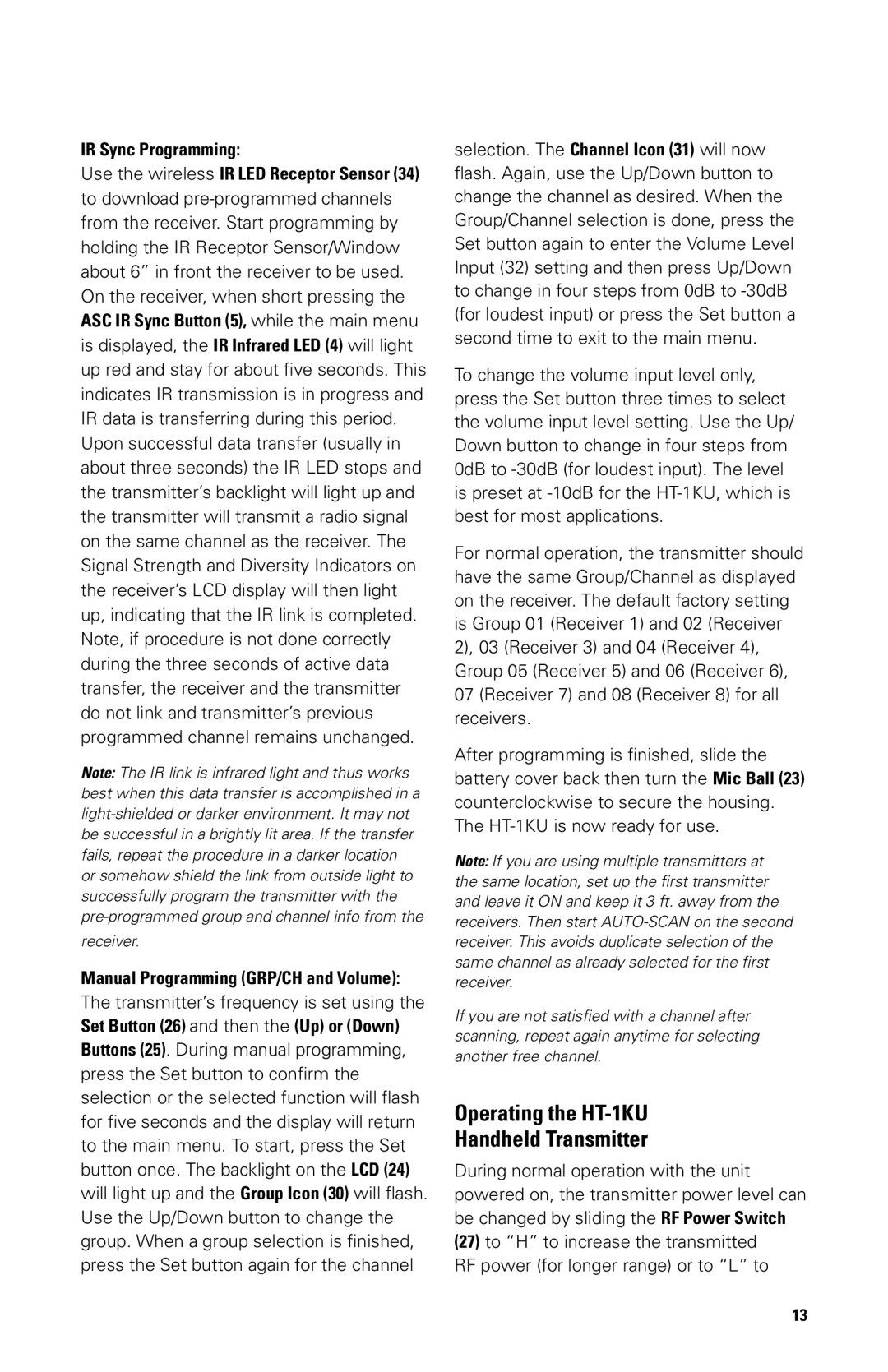SW-1KU specifications
Nady Systems SW-1KU is a pioneering wireless microphone system designed specifically for live performances, professional audio production, and broadcasting. Renowned for its reliability and exceptional audio quality, the SW-1KU has garnered attention in the competitive world of wireless sound technology.One of the notable features of the SW-1KU is its UHF operation. This system utilizes the ultra-high frequency spectrum to provide a stable and interference-resistant connection. Operating in the UHF band ensures that users experience less dropouts and clearer sound, a critical aspect for performers who rely heavily on wireless systems during live shows.
The SW-1KU comes with a complete package that includes a receiver and a handheld transmitter. The receiver boasts an easy-to-read LCD display, which provides essential information at a glance, such as battery level, frequency selection, and signal strength. This real-time information empowers users to make quick adjustments on the fly, ensuring a smooth performance.
Another impressive aspect of the SW-1KU is its extended operating range. It can typically reach distances of up to 300 feet in optimal conditions, allowing performers the freedom to move around the stage without compromising audio fidelity. This feature is particularly advantageous for dynamic entertainers who engage the audience from various parts of the venue.
The SW-1KU also incorporates advanced digital processing technology that minimizes latency. The system transmits audio with minimal delay, preserving the timing essential for vocal performances and instrument play. This technology helps maintain synchronization between audio and video, which is particularly beneficial in applications such as live broadcasting.
Furthermore, the SW-1KU has an easy setup process. Users can quickly configure the system to operate across multiple channels, making it an ideal choice for events with multiple performers or speakers. The auto-scan feature automatically selects the optimal frequency, significantly simplifying the user experience, especially for those new to wireless systems.
In terms of build quality, the SW-1KU is engineered to withstand the rigors of live performances. Its robust construction ensures durability while remaining lightweight for ease of use. Additionally, the system is designed to deliver high-fidelity sound reproduction, making it suitable for various audio applications, from concerts to conferences.
Overall, the Nady Systems SW-1KU stands out for its blend of performance, user-friendly features, and reliable operation. Whether for professional musicians, speakers, or event organizers, this wireless microphone system caters to a wide range of needs while delivering consistent audio excellence. It represents a solid investment for those seeking a dependable wireless solution in the demanding world of live audio.
